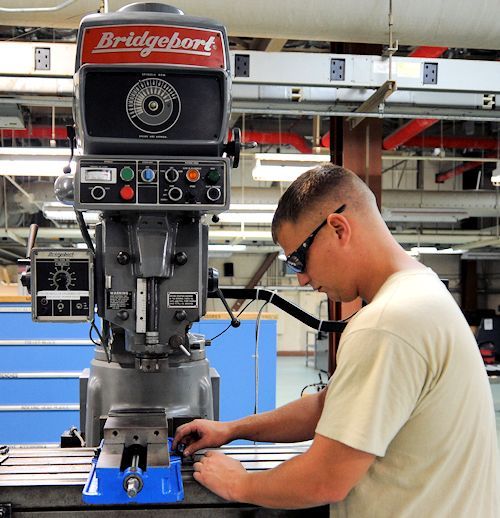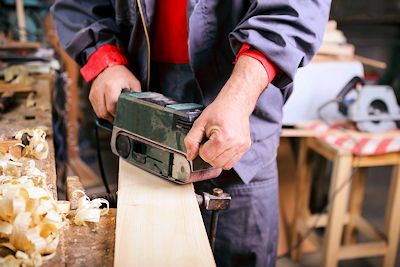Operating Controls and Switches
Because power tools are extremely hazardous if used improperly, they must be fitted with safety switches. The types of power tools are determined by their power source: electric, pneumatic, liquid fuel, hydraulic, and powder-actuated.
Here are brief definitions of three types of power tool controls:
- Constant Pressure Controls: These are switches that require continuous pressure from the user to keep tools operating, stopping immediately when pressure is released.
- Positive "On-Off" Controls: A switch that remains in the "on" or "off" position until manually changed by the user.
- "Lock-On" Controls: A switch that allows the tool to remain on without continuous pressure from the user, typically used for extended operation without fatigue.
Constant-Pressure Switches and Controls
The following hand-held power tools must be equipped with constant pressure controls that require continuous pressure to keep the tools operating. The tools stop operating when pressure is released.
- drills
- chain saws
- tappers
- belt sanders
- fastener drivers
- horizontal, vertical, and angle grinders with wheels more than 2 inches (5.08 centimeters) in diameter
- disc sanders with discs greater than 2 inches (5.08 centimeters)
- reciprocating saws
- saber saws
- scroll saws, and jigsaws with blade shanks greater than 1/4-inch (0.63 centimeters) wide
- circular saws having a blade diameter greater than 2 inches (5.08 centimeters)
- percussion tools with no means of holding accessories securely
- other similar tools
These tools also may be equipped with a "lock-on" control, if it allows the worker to also shut off the control in a single motion using the same finger or fingers.
Knowledge Check Choose the best answer for the question.
2-3. What common safety feature must be provided on drills, belt sanders, and chain saws?
You forgot to answer the question!


